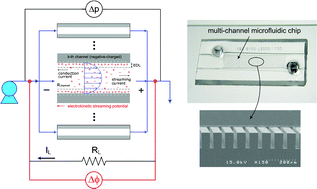Fabrication and validation of a multi-channel type microfluidic chip for electrokinetic streaming potential devices
Abstract
To elaborate on the applicability of the electrokinetic micro power generation, we designed and fabricated the silicon-glass as well as the PDMS-glass microfluidic chips with the unique features of a multi-channel. Besides miniaturizing the device, the key advantage of our microfluidic chip utilization lies in the reduction in


 Please wait while we load your content...
Please wait while we load your content...